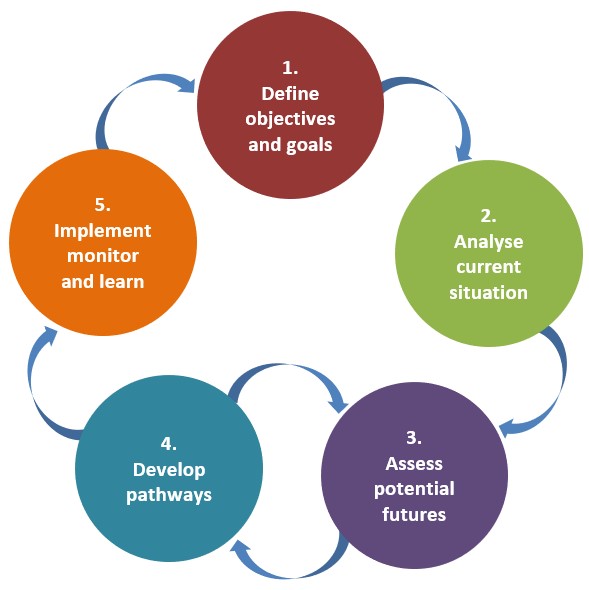Climate change adaptation pathways
Making decisions to prepare for climate change can form the steps on an adaptation pathway into the future. Breaking adaptation actions into a sequence of stages can help to manage uncertainty and provide confidence to start putting plans into action. Adaptation pathways make it easier to communicate how decisions can be structured and ordered because many actions can be visually mapped through diagrams.
Who is this for?
If you are interested in planning long-term climate change preparedness for communities but need some support, the adaptation pathways approach may help.
The Climate Change Adaptation Pathways Framework: Supporting Sustainable Local Food in B.C. (PDF) and User Guide (PDF) were written to help communities and agricultural producers to develop shared adaptation goals and objectives with a focus on sustainable local food.
Adaptation pathways work at many scales, focused on collective actions to manage climate change over time. Pathways can be developed by communities focused on a place such as a town or region, communities with shared practices such as farming or fishing, and communities connected through shared beliefs, culture and traditions. Adaptation pathways use a participatory and inclusive approach that helps communities address future goals, one step at a time.
View the AgriService BC adaptation pathways webinar and access the presentation slides (PDF).

Image caption: Five stage approach to adaptation pathways planning (adapted from Serrao-Neumann, 2015.)
